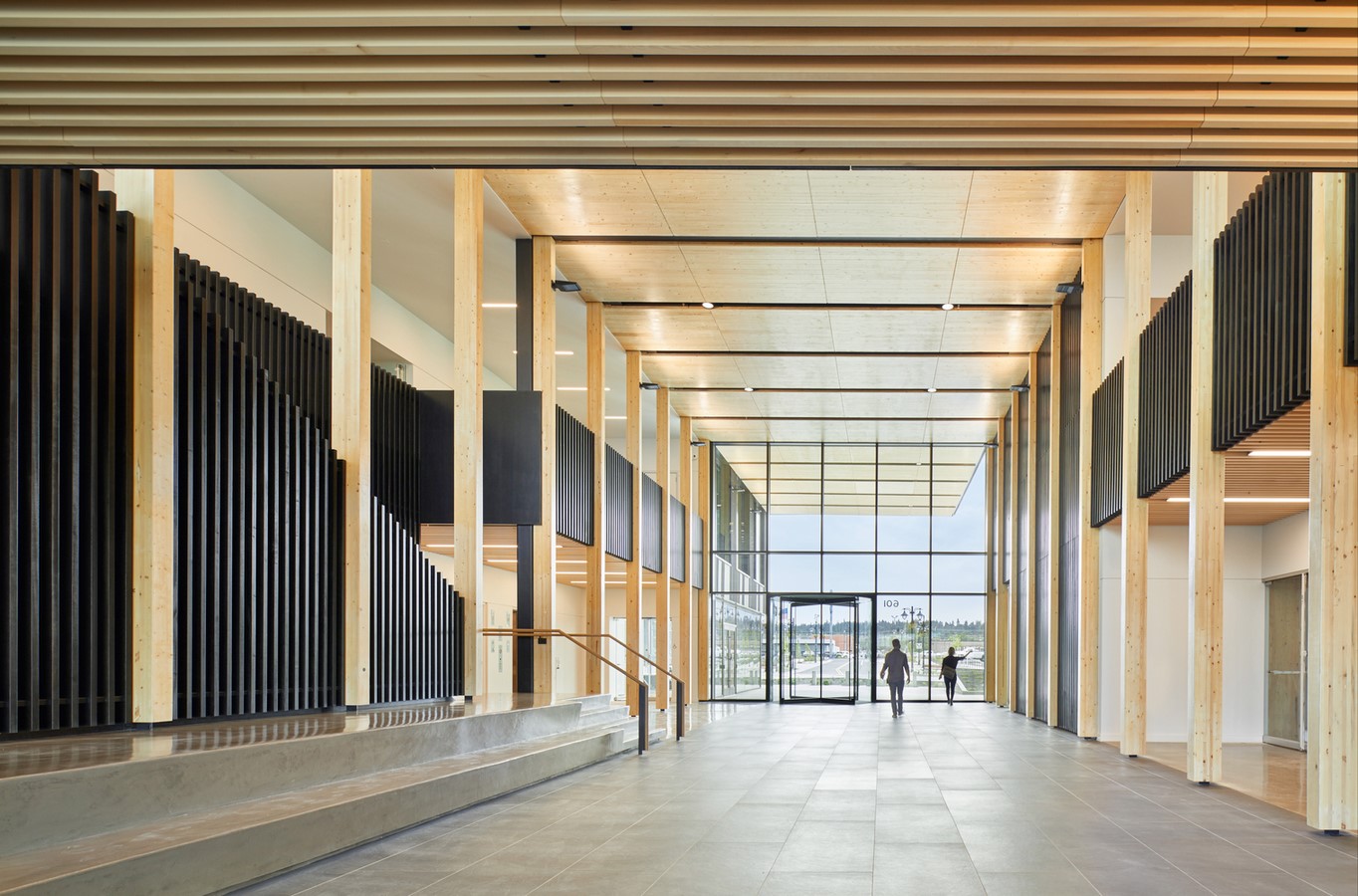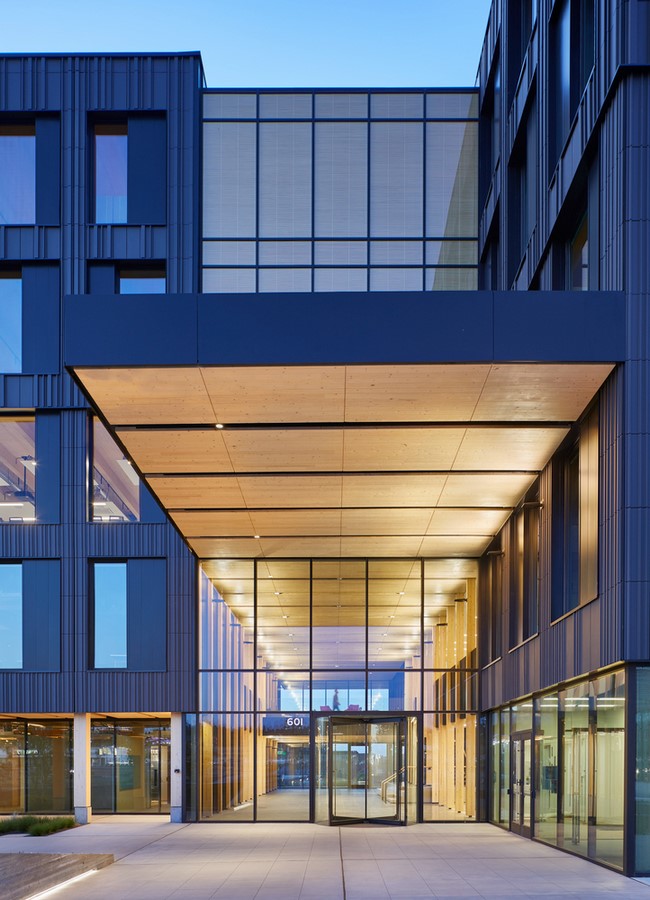The Catalyst Building, designed by Michael Green Architecture, represents a pioneering venture in sustainable construction as the first office building in Washington State to utilize cross-laminated timber (CLT). This innovative structure is striving to achieve Zero Energy and Zero Carbon certification from the International Living Future Institute, positioning it as one of the largest buildings in North America to meet these rigorous standards. Serving as a living laboratory for sustainability, the Catalyst Building integrates cutting-edge technologies, materials, and design principles.

Location and Design
Situated in Spokane, Washington, the Catalyst Building occupies a 165,000 square foot, 5-storey space on an irregular site in need of revitalization. Connected to the University District by the Gateway Bridge, the building serves as a nexus for collaboration between industry and academia. Its versatile floor plates accommodate a range of office and academic functions, fostering innovation and interdisciplinary exchange.

Sustainable Construction
A central goal of the Catalyst Building project was to demonstrate the superior performance of mass timber construction compared to traditional steel and concrete buildings. Through meticulous design and implementation of sustainable MEP systems, the building maximizes energy efficiency and minimizes environmental impact. Utilizing over 4,000 cubic meters of locally sourced CLT and glulam products, the construction process sequestered 3,713 metric tons of carbon dioxide, further enhancing its eco-friendly credentials.


Carbon-Neutral Design
Supported by a Life Cycle Assessment conducted by the Carbon Leadership Forum at the University of Washington, the Catalyst Building showcases the potential of timber construction to mitigate embodied carbon emissions. By prioritizing lower-carbon materials and embracing a “passive-first” approach to design, the building achieves exceptional performance in terms of carbon storage and energy efficiency. Rainwater capture, envelope design adhering to Passive House standards, and durable material applications contribute to its long-term sustainability.

A Model of Sustainability
With its outstanding airtightness and adherence to eco-district principles, the Catalyst Building represents a paradigm shift in sustainable development. By seamlessly integrating state-of-the-art technologies with traditional affordability metrics, the project sets a new standard for environmentally conscious construction. As a symbol of Spokane and Washington State’s commitment to sustainability, the Catalyst Building embodies a vision of a greener, more resilient future for urban development.















